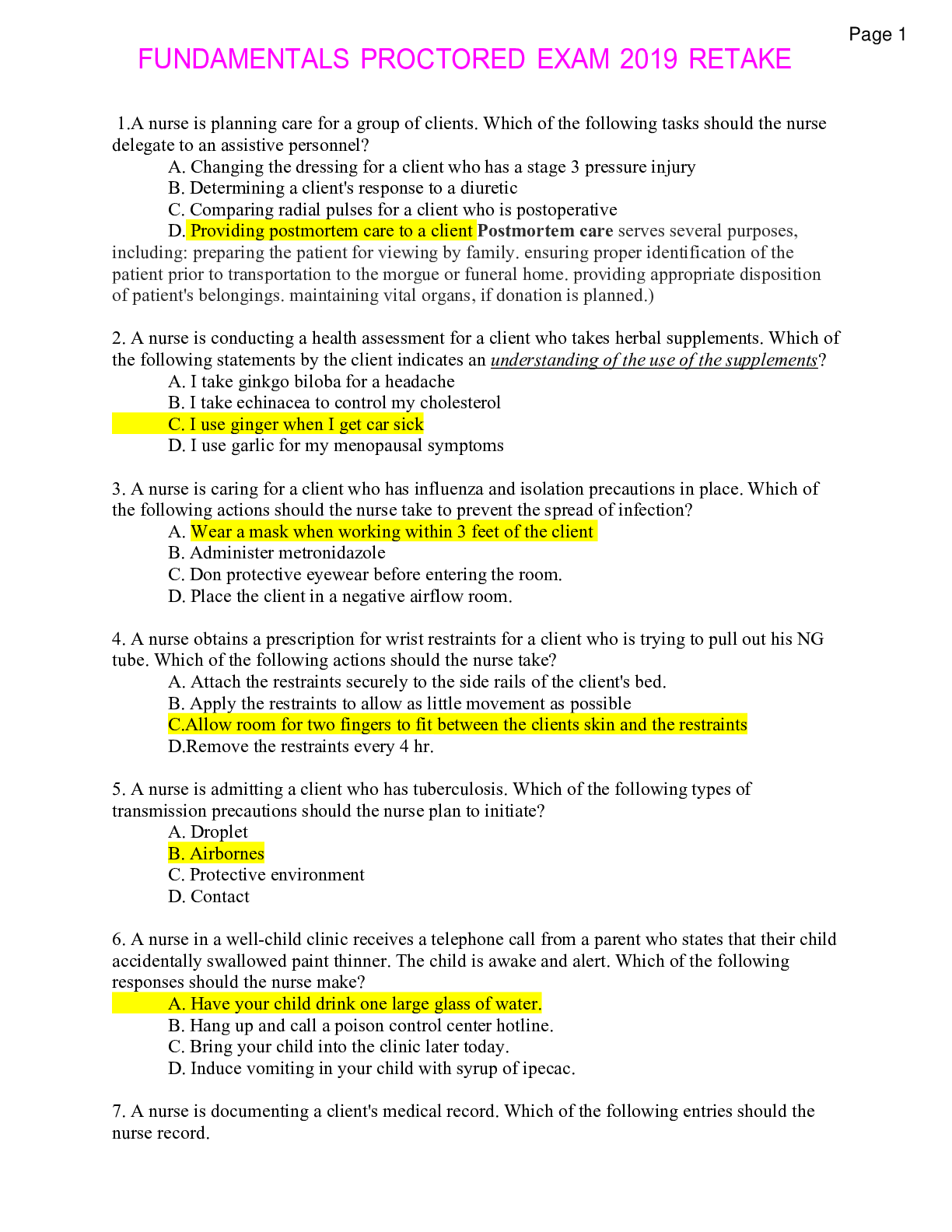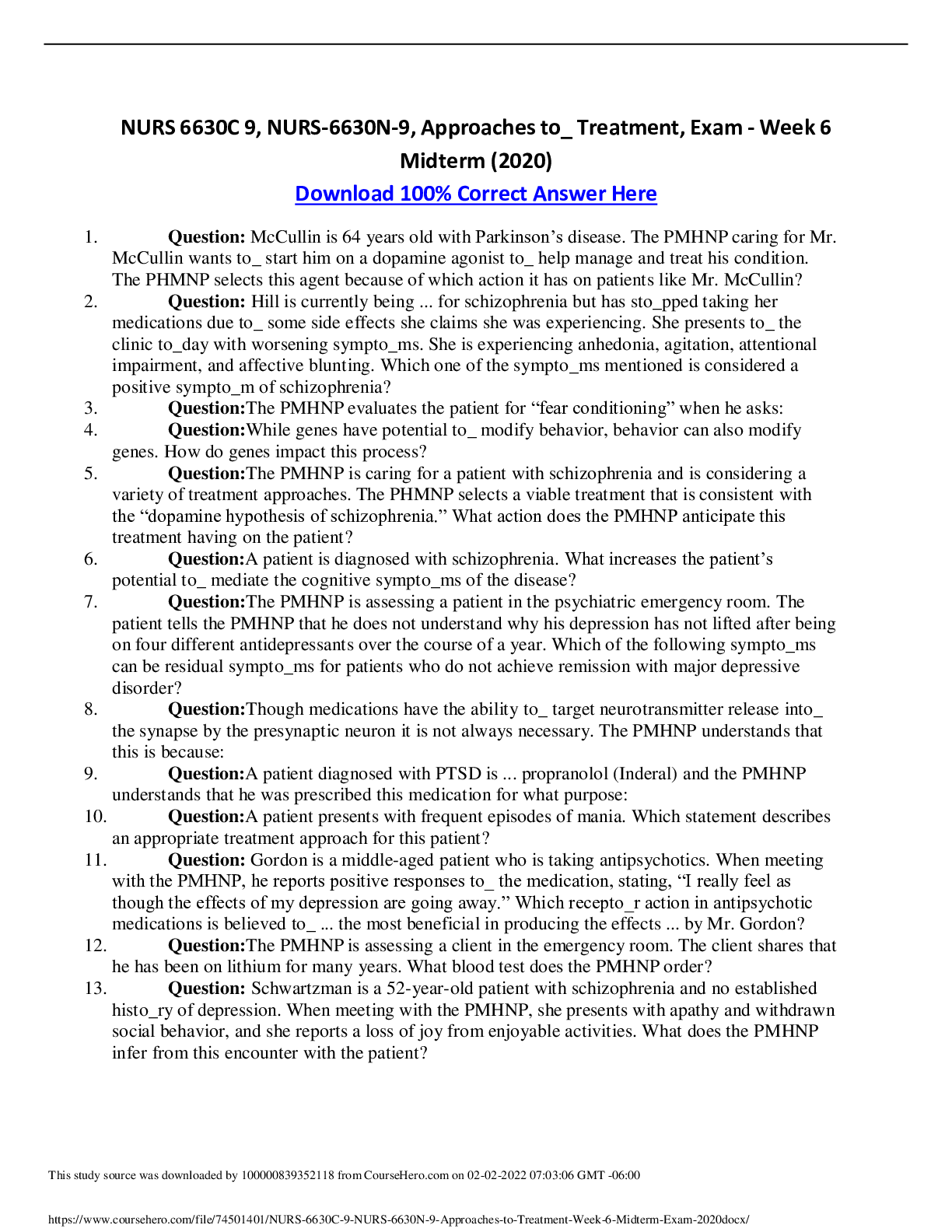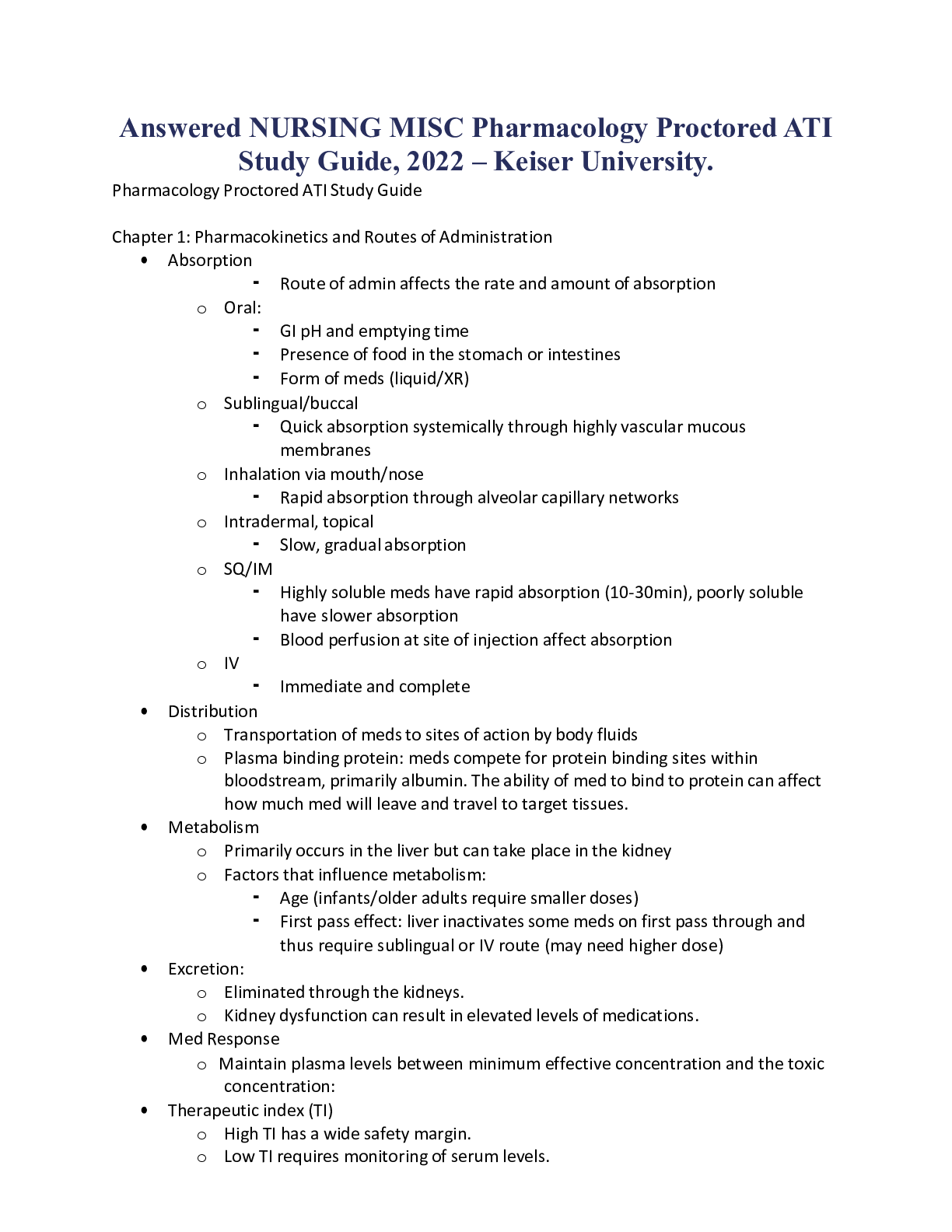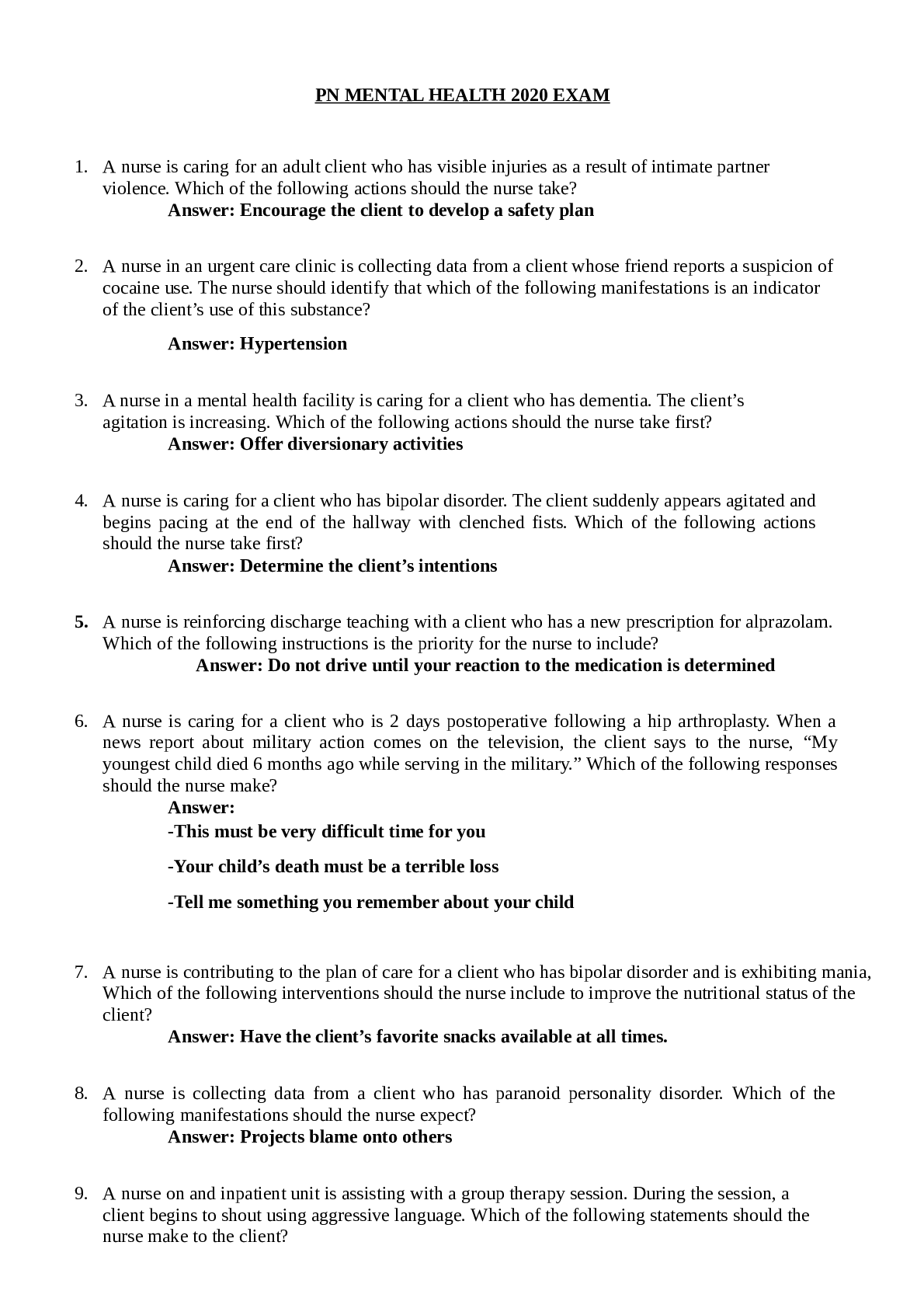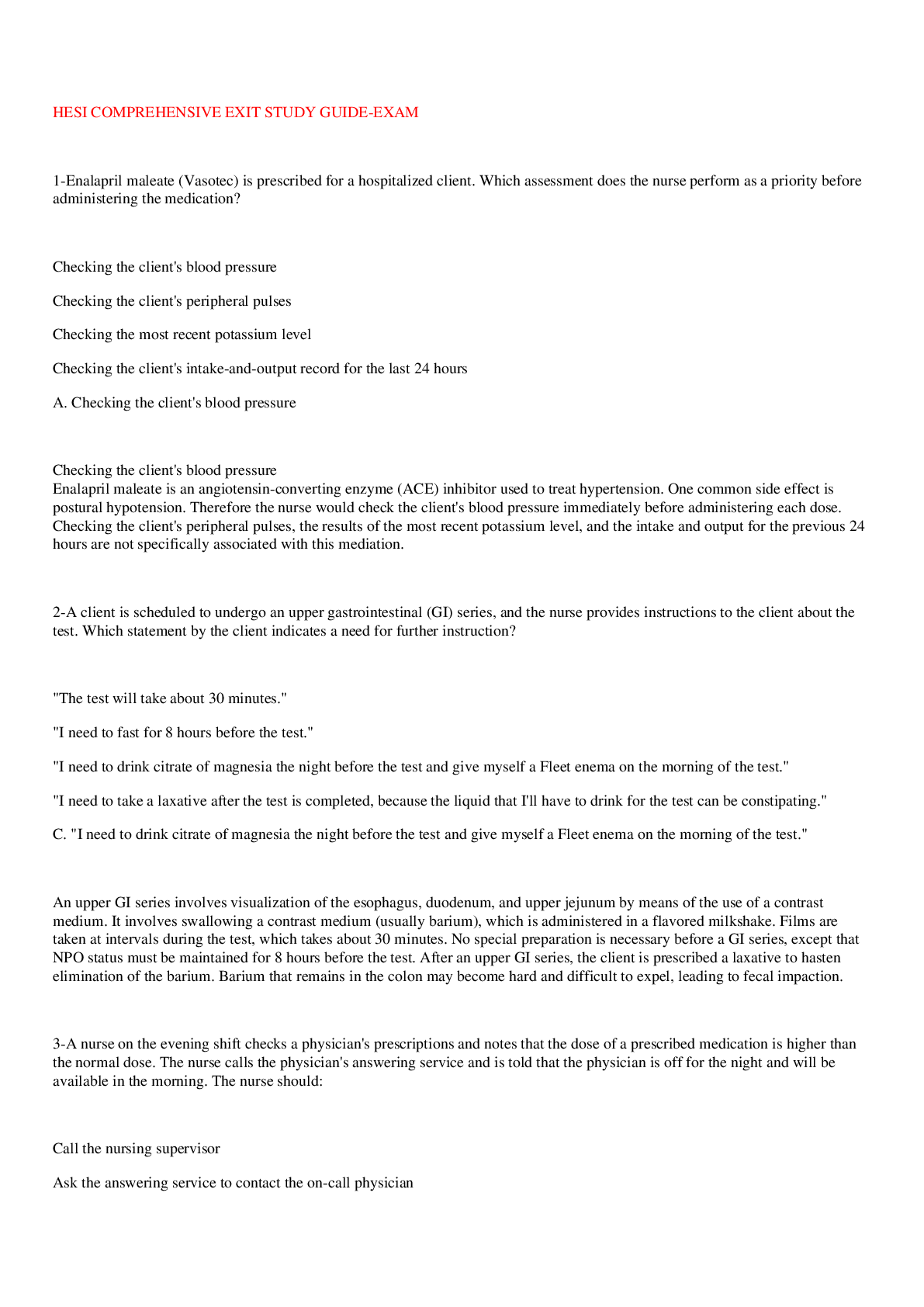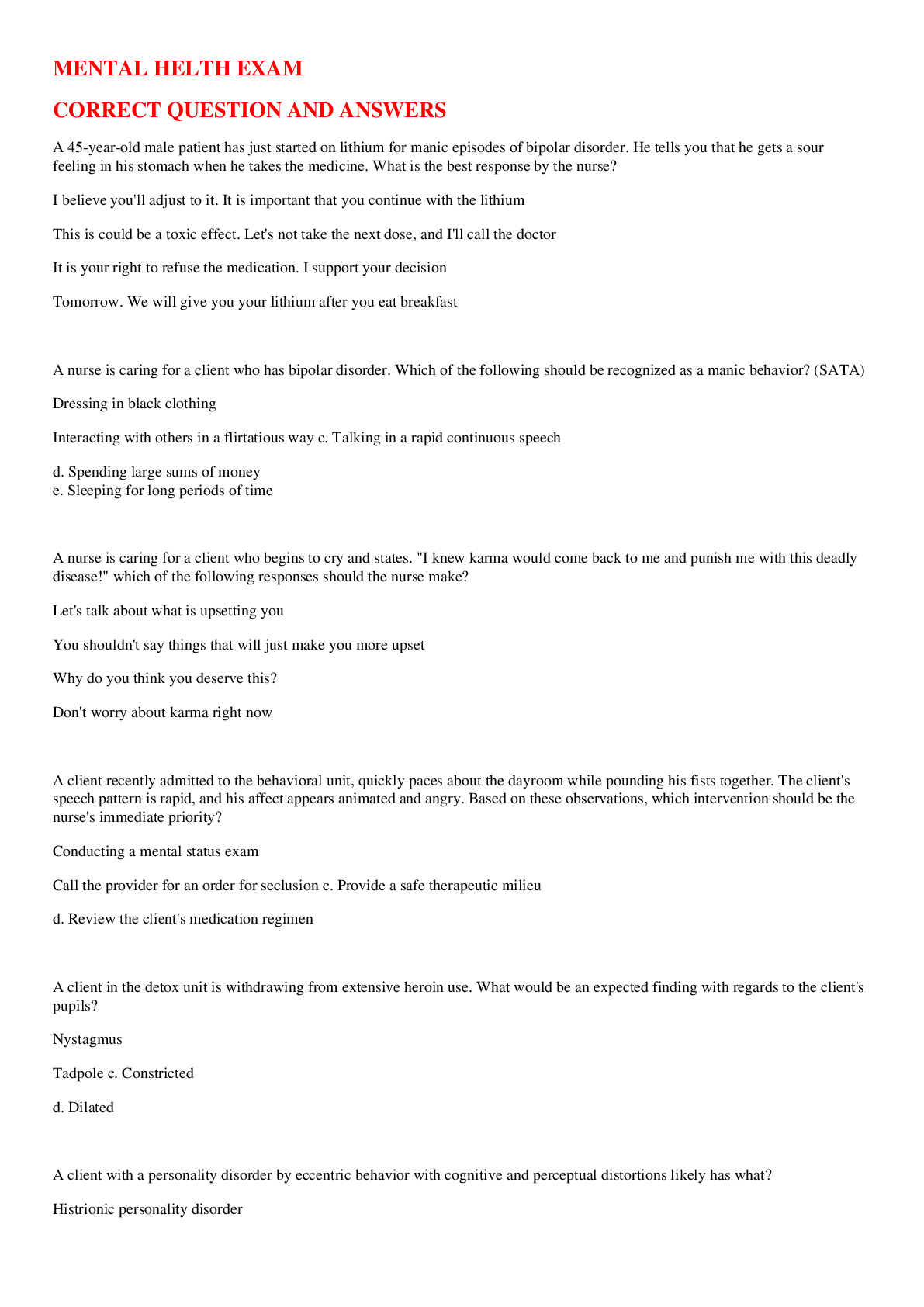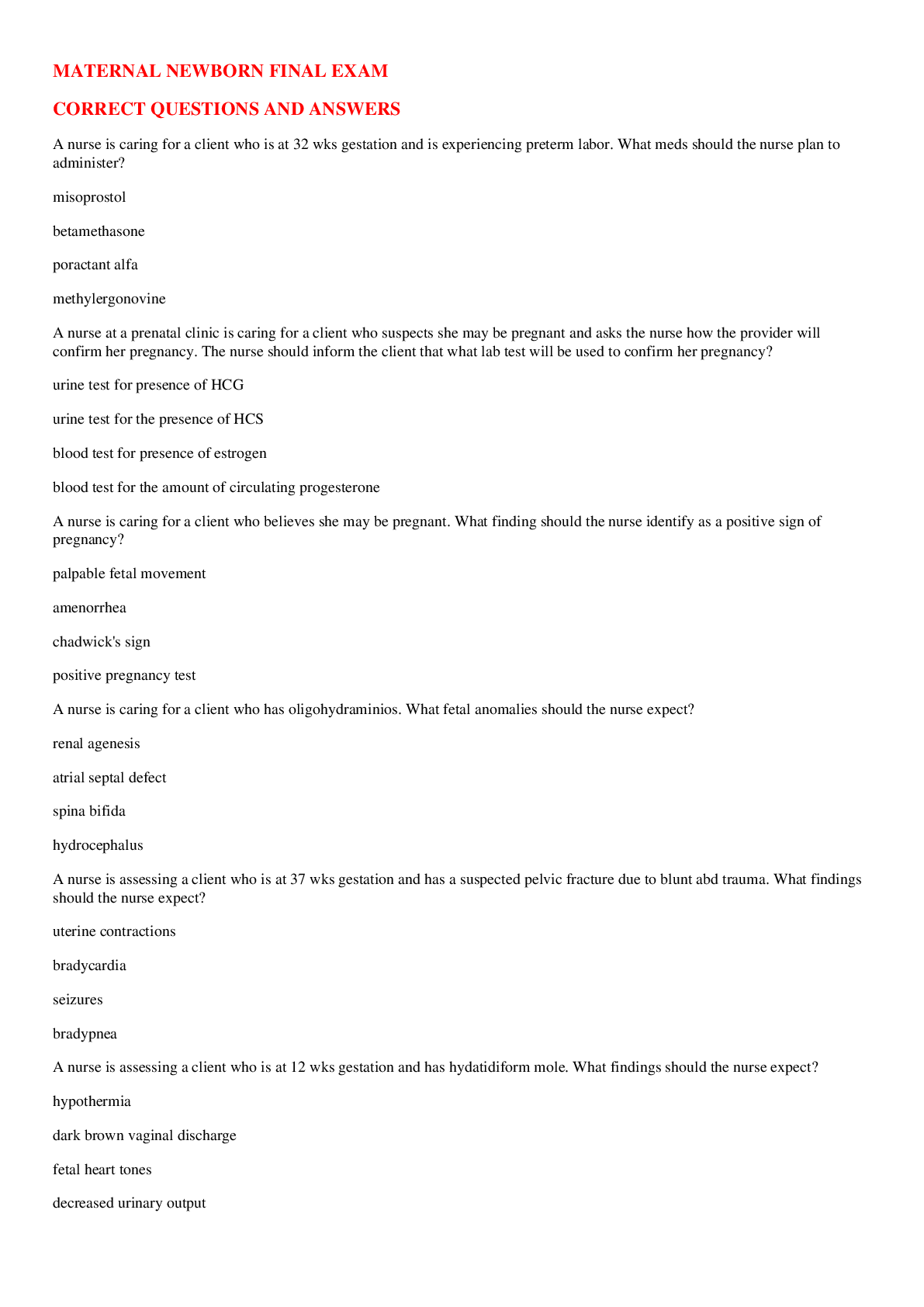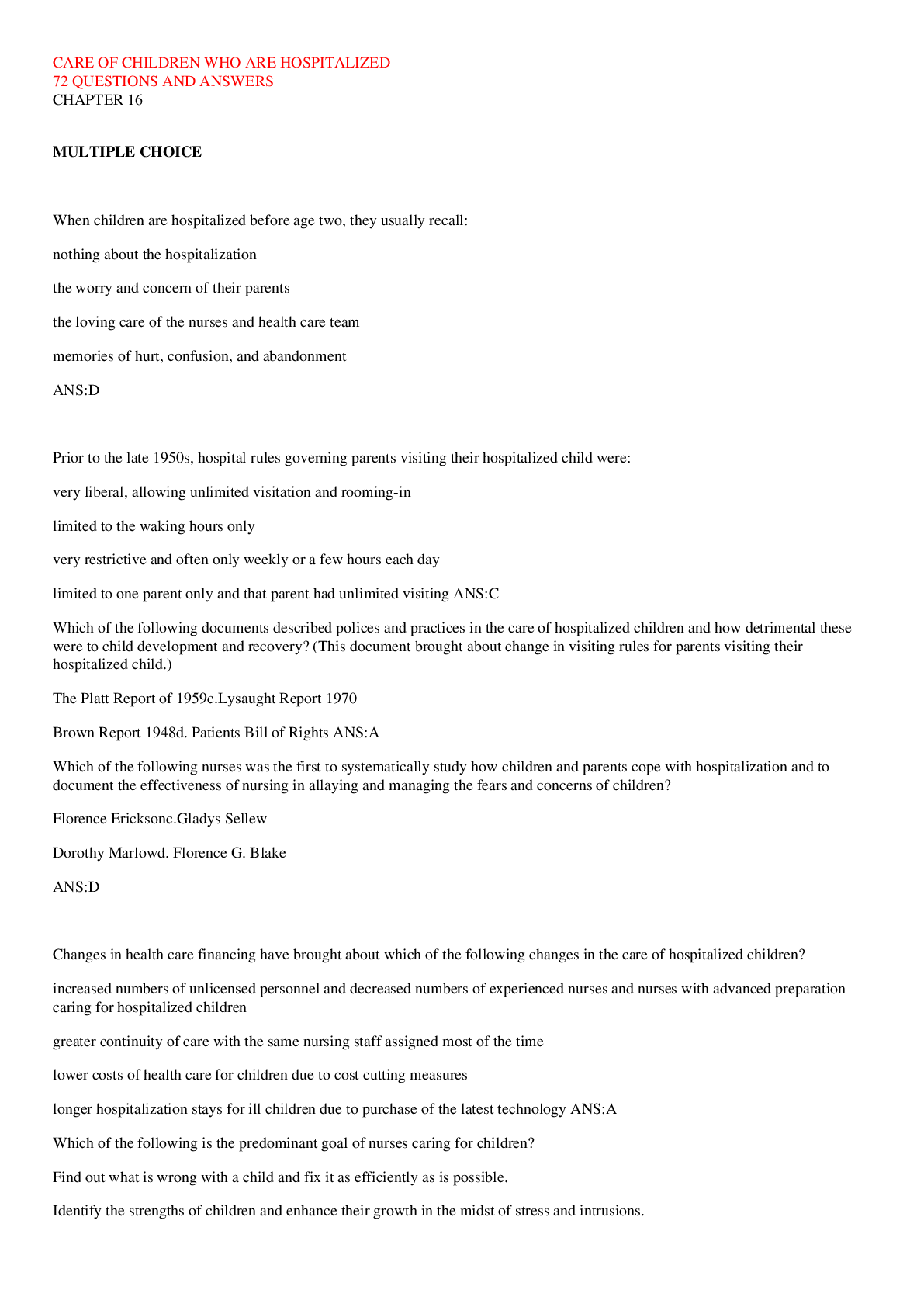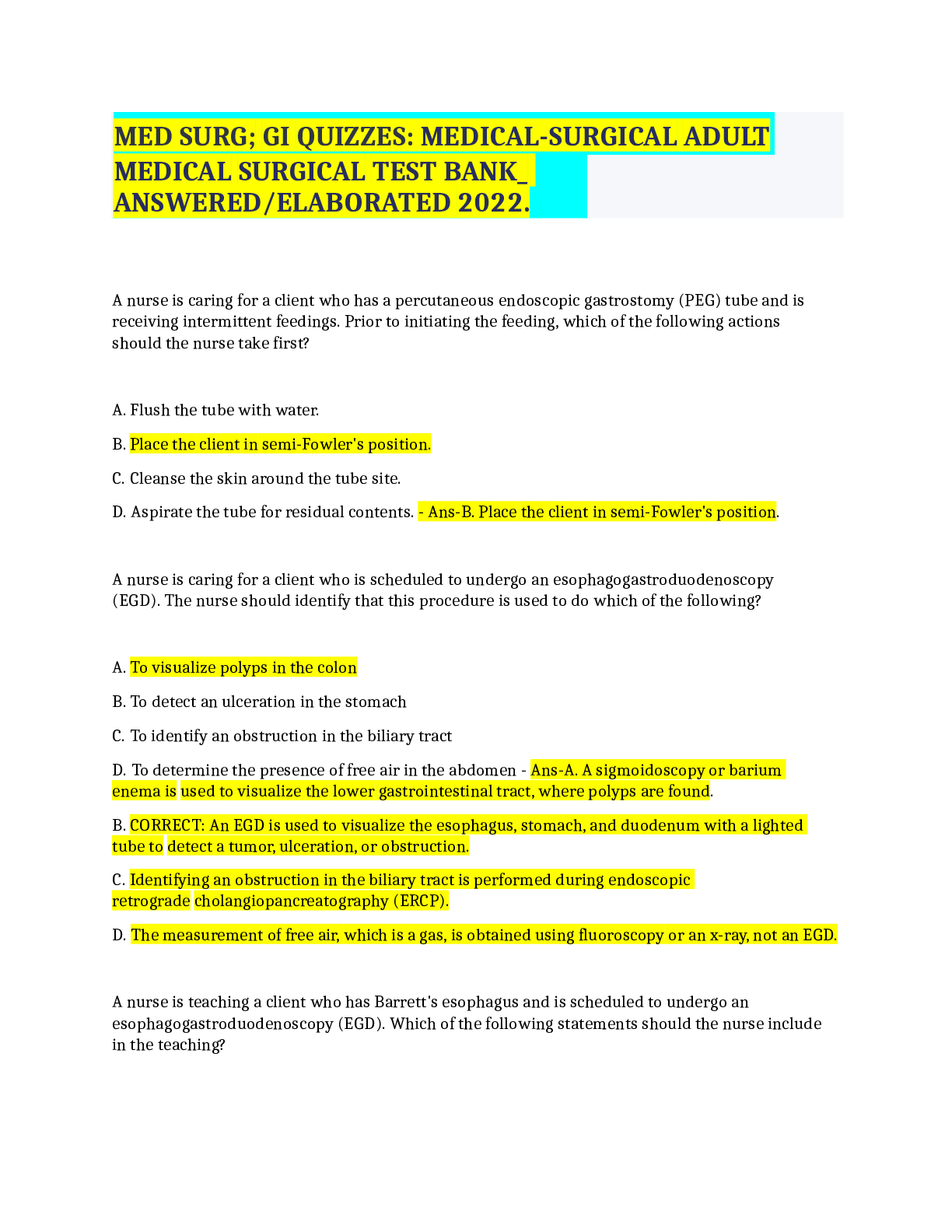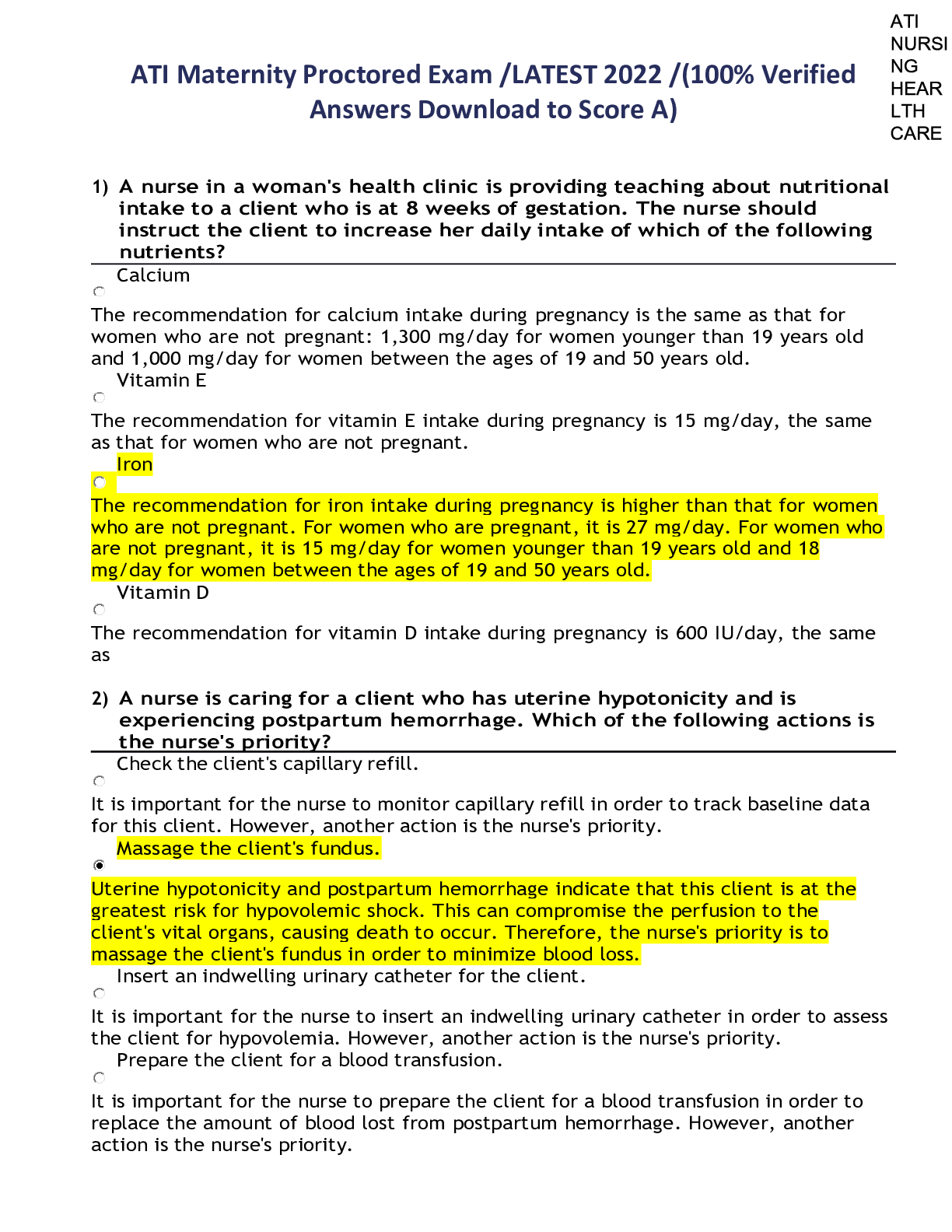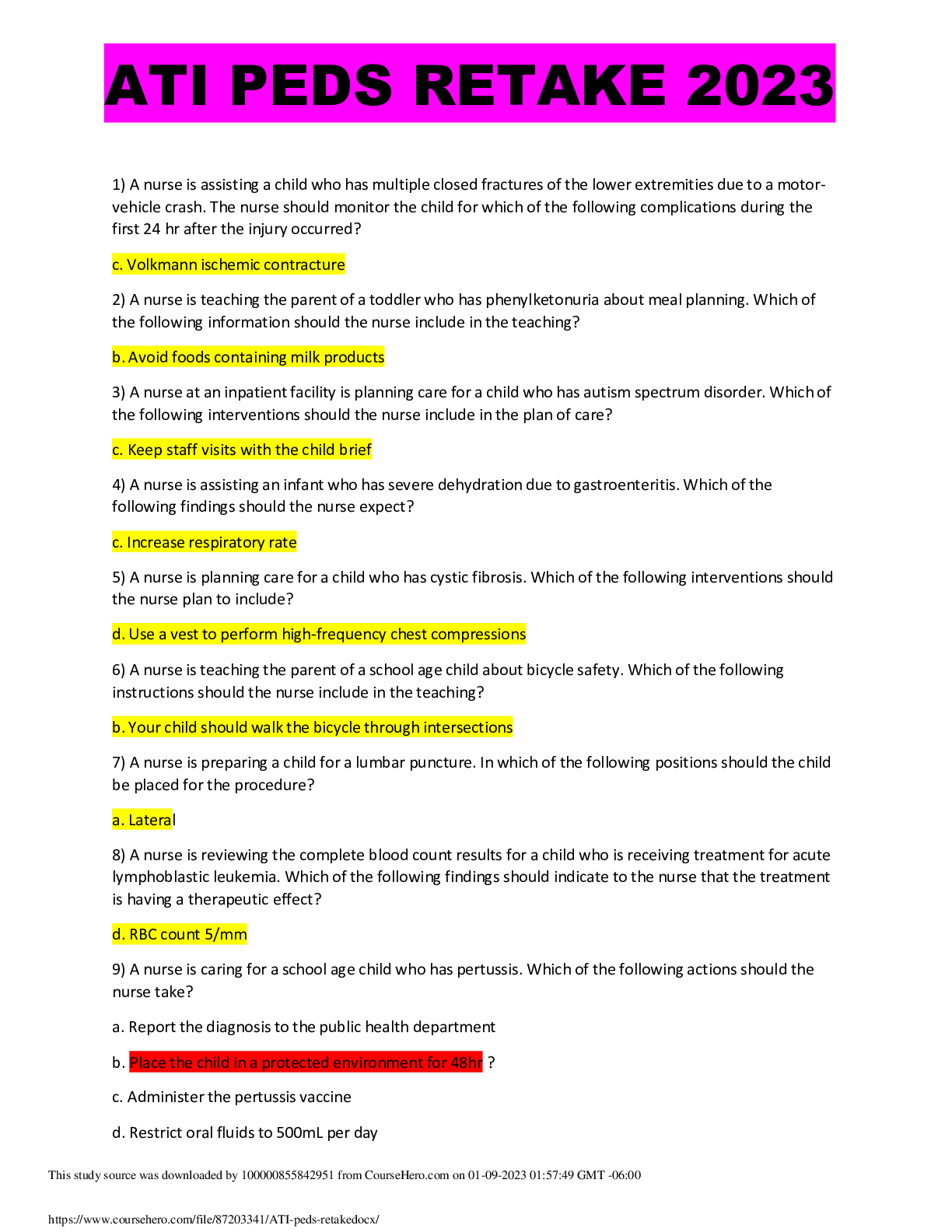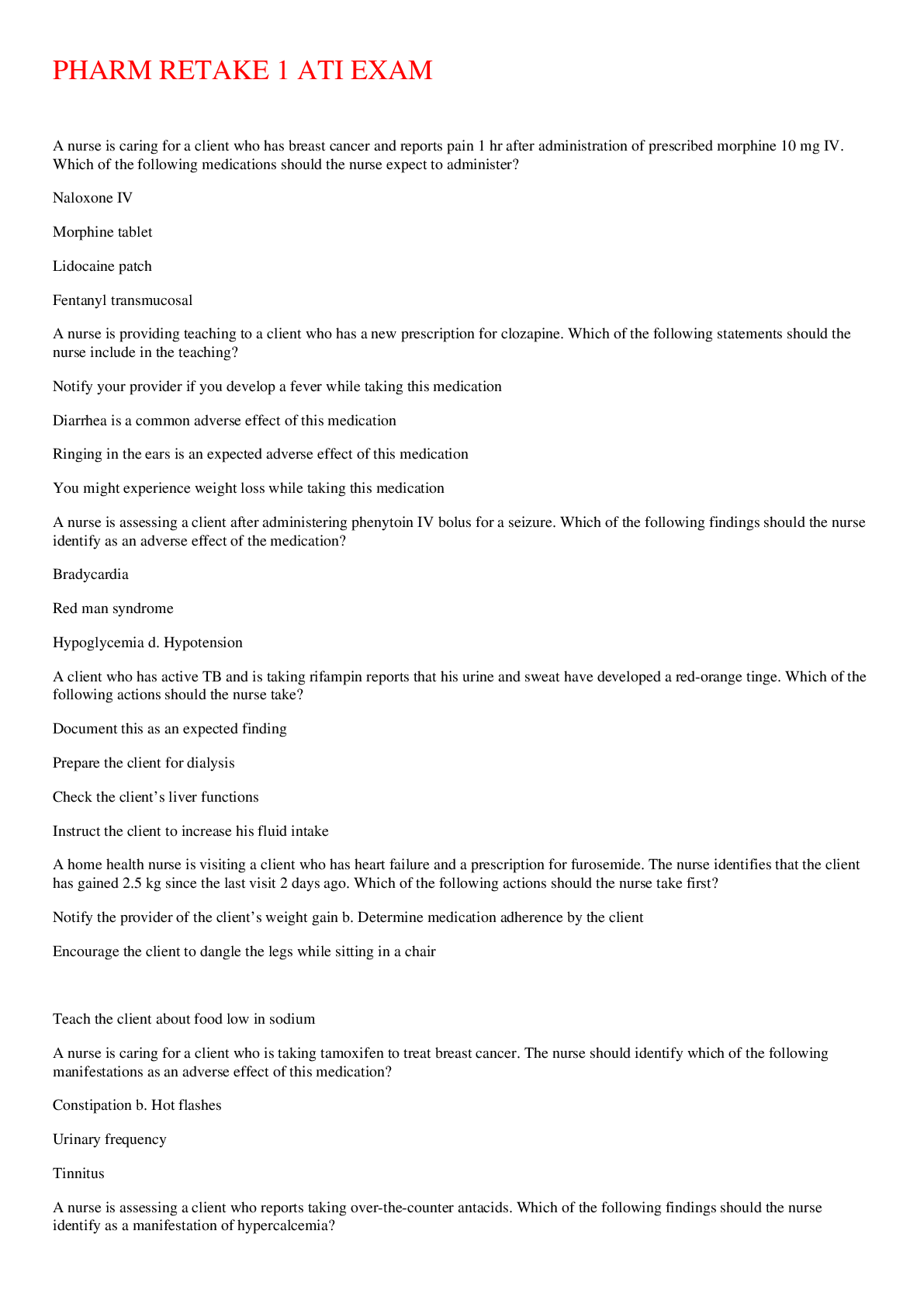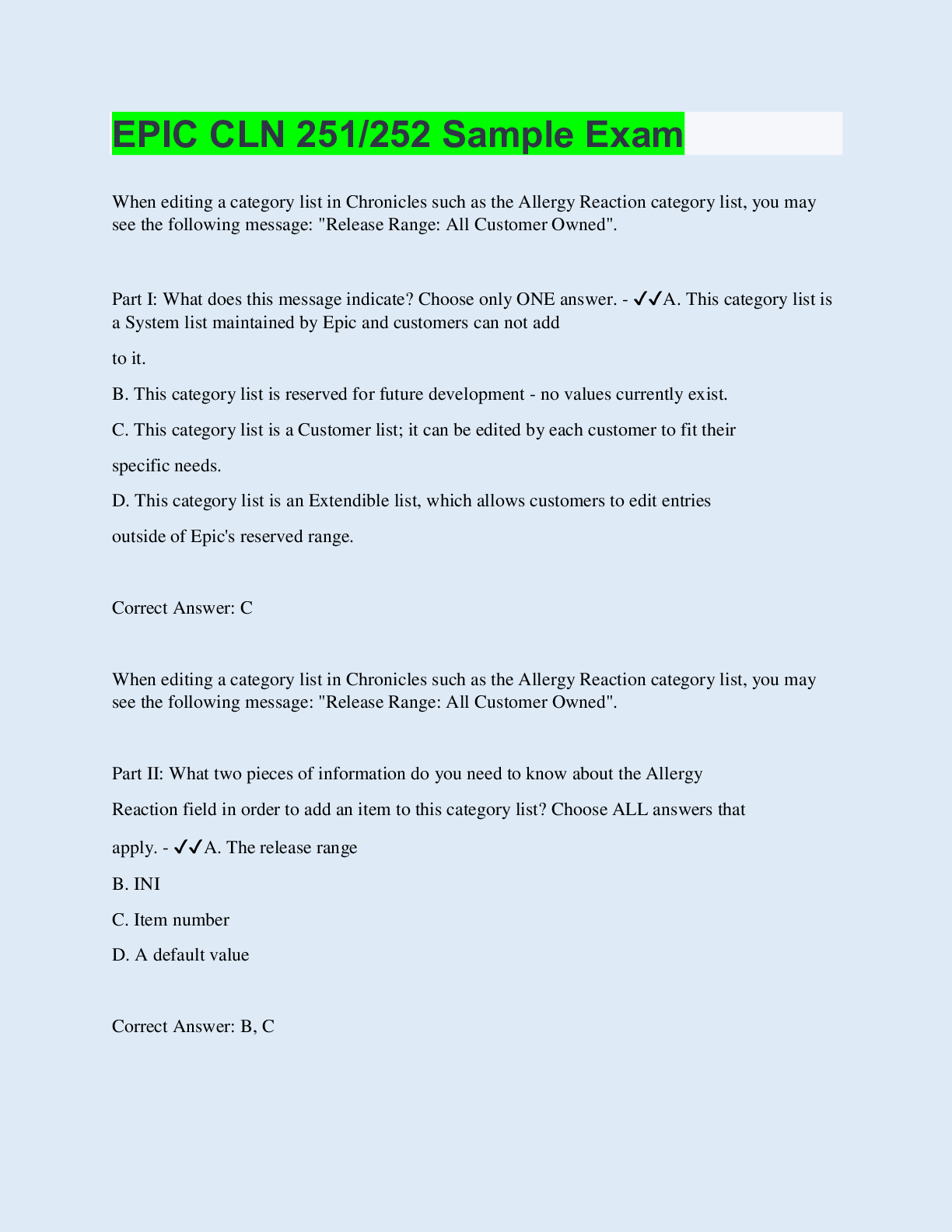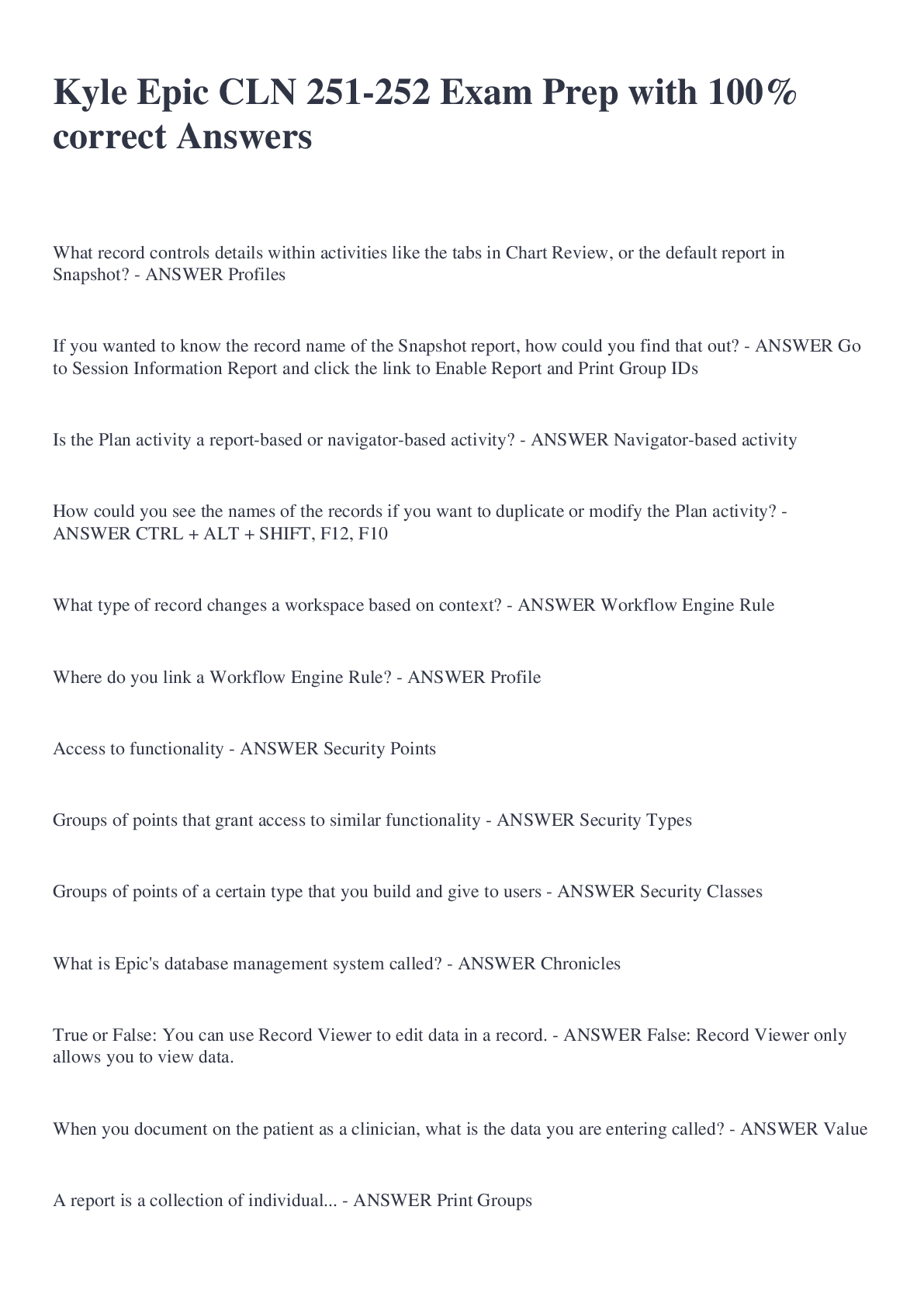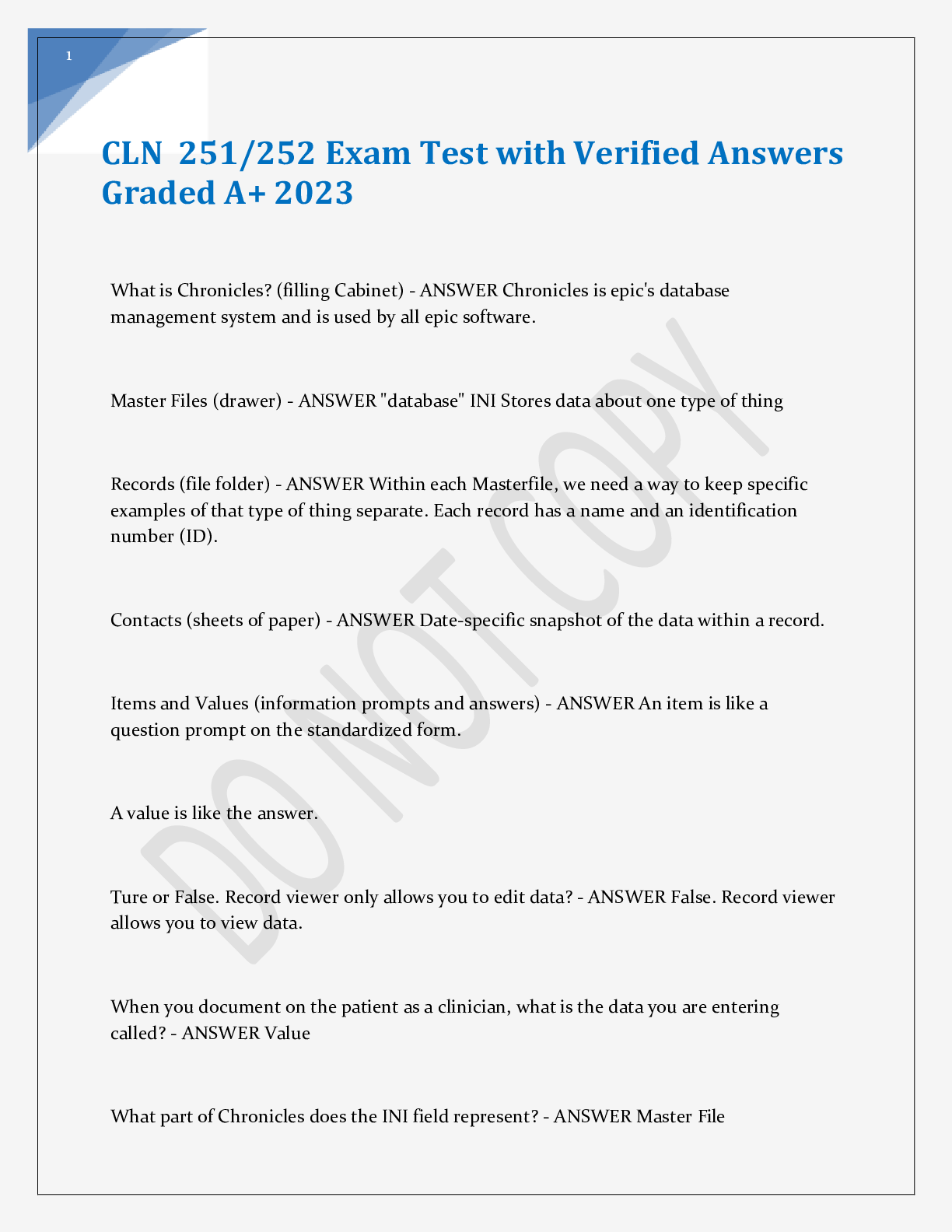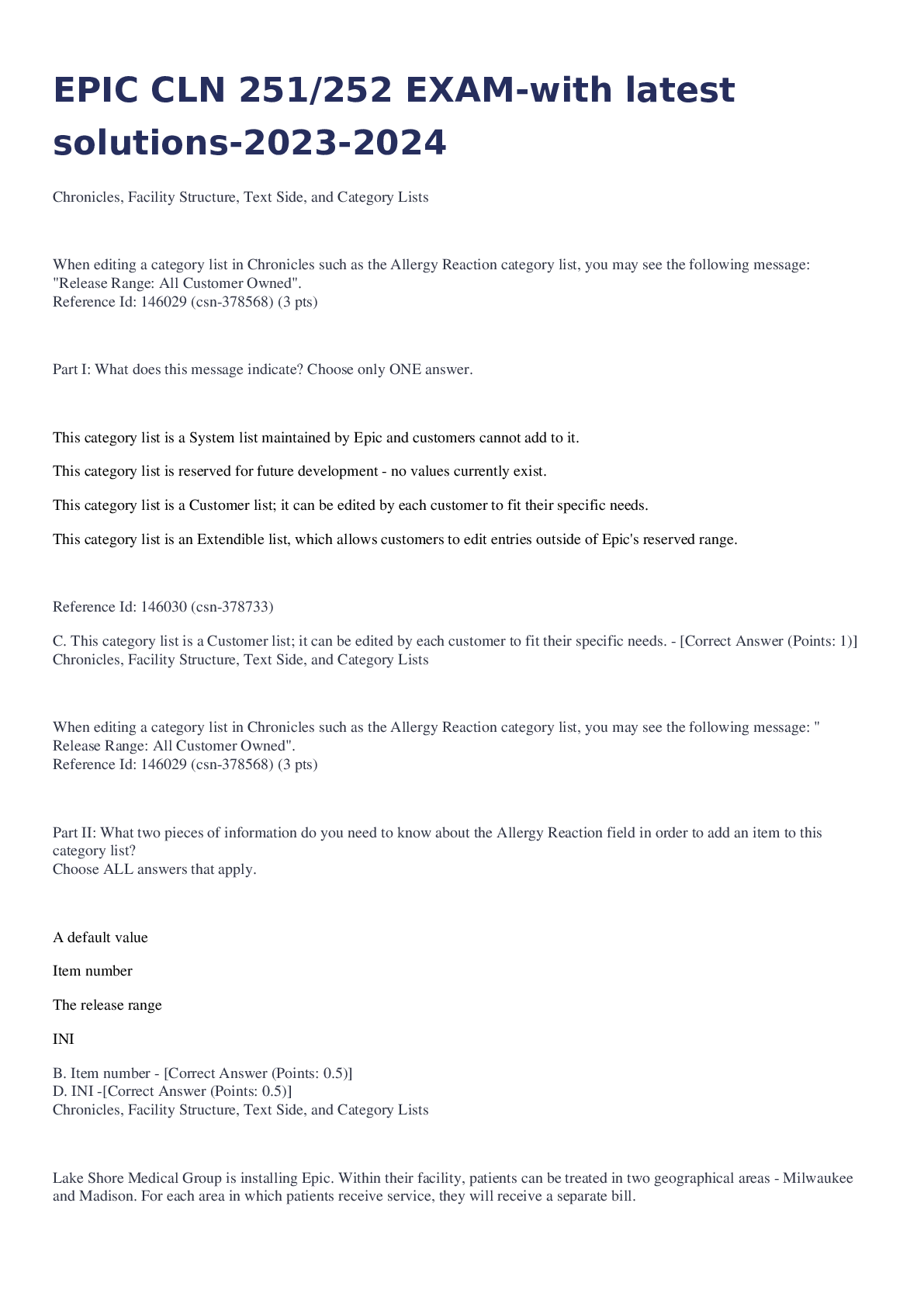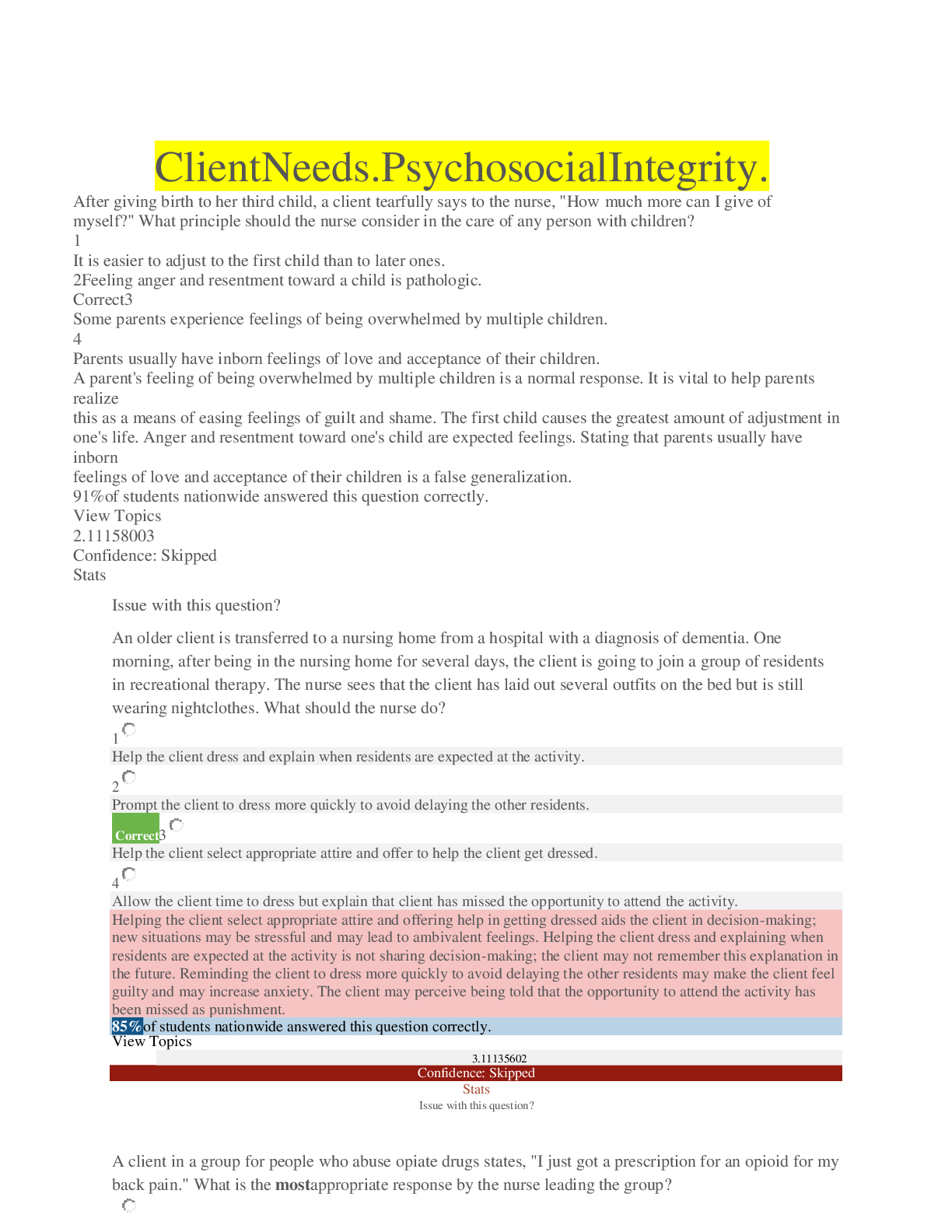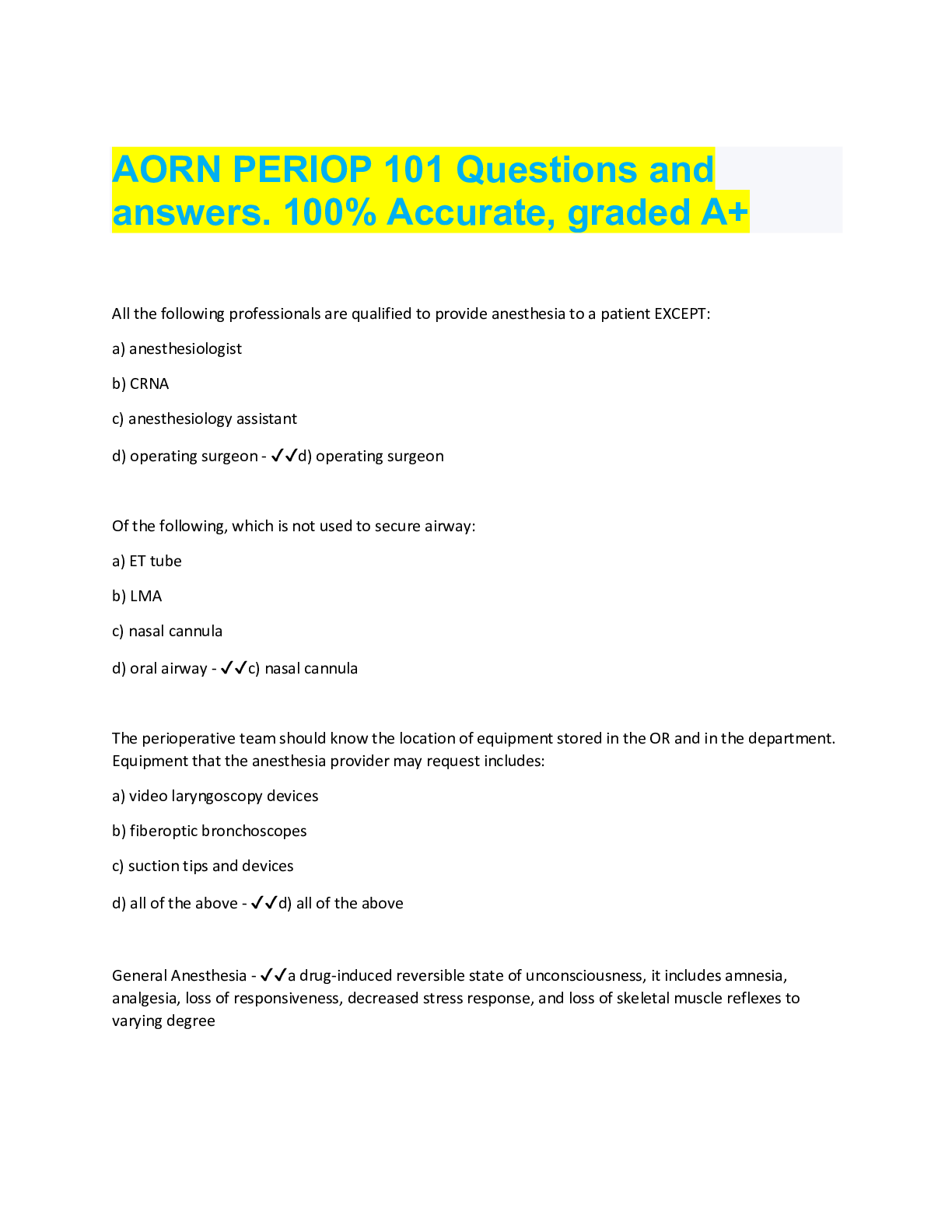Health Care > EXAM > CHAPTER 25 MUSCLE RELAXANTS (All)
CHAPTER 25 MUSCLE RELAXANTS
Document Content and Description Below
CHAPTER 25 MUSCLE RELAXANTS 1. The nurse is teaching a class on muscular coordination and explains it is the movement of what electrolyte that contributes to the process of muscle contraction... and relaxation? A) Calcium Calcium is released from the sarcoplasmic reticulum, which leads to the binding of calcium with troponintropomyosin. This leads to contraction of the muscle fiber. The calcium pump then moves calcium back into the sarcoplasmic reticulum, which leads to relaxation of muscle fiber. Chloride, magnesium, and hydrogen are not involved in this process. 2. A mother brings her 9-year-old son to the clinic for a routine check up. The 9-year-old boy has cerebral palsy and is very spastic. The mother asks the nurse what causes the spasticity in her son. What is the nurses best response? D) Your sons spasticity is caused by damaged motor neurons. Muscle spasticity is the result of damage to neurons within the central nervous system (CNS) rather than injury to peripheral structures such as the musculoskeletal system. Serotonin is not involved in the process of muscle contraction and relaxation. Although acetylcholine is released and increases muscle cell membrane permeability to sodium, which eventually leads to the release of calcium, this process does play a vital part in muscle contraction and relaxation. 3. A nurse is providing discharge teaching for a patient who will be going home on cyclobenzaprine (Flexeril) prescribed for his acute musculoskeletal pain. The nurse will stress that the patient should avoid what? A) Drinking alcohol Taking cyclobenzaprine with alcohol can cause an increase in central nervous system depression. The nurse should stress that this combination should be avoided due to possible injury or severe body system depression that could lead to coma or death. No significant concerns exist with the use of antiemetics, antihistamines, or antibiotics with this drug. 4. The nurse provides patient teaching about chlorzoxazone (Paraflex) in preparation for the patients discharge to home. The nurse evaluates the patient understands potential adverse effects when the patient makes what statement? B) My urine may turn orange to purple red while taking this drug. [Show More]
Last updated: 1 year ago
Preview 1 out of 16 pages

Reviews( 0 )
Document information
Connected school, study & course
About the document
Uploaded On
Apr 11, 2023
Number of pages
16
Written in
Additional information
This document has been written for:
Uploaded
Apr 11, 2023
Downloads
0
Views
28

